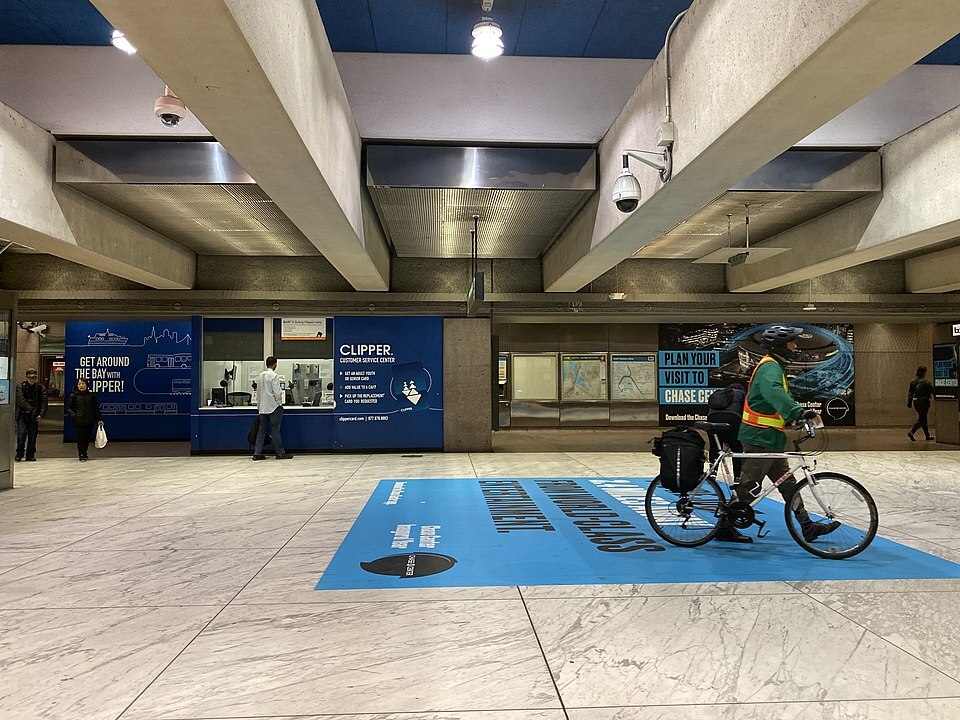OFF MENU IS SPONSORED BY BENDER’S BECAUSE THEY ARE BADASS. DROP BY AND MAKE SOME BAD DECISIONS WITH SOME GOOD PEOPLE!
Photo by: Valentina Kramer
Bob Dylan once wrote, You’re gonna have to serve somebody, yes indeed you’re gonna have to serve somebody. As a long-time server and resident of San Francisco, that couldn’t be more true. The busboys gotta serve the waiter, the waiters gotta serve the business and tech types, the business and tech types gotta serve their boss, the boss has to serve the market, and on and on. The capitalist cycle is ruthless, sometimes faceless, and like all machines, people in these jobs tend to get lost in the cogs and underrepresented in the larger framework of the company. Next year, Jeff Bezos’ D.C. mansion will have two elevators, 25 bathrooms, 1,006 light fixtures, a full movie theatre, all while Whole Foods cut health benefits for part-time workers less than three months ago. Jeff obviously serves himself, yet those part-time employees and anybody that has been taken advantage of by the powers that be are still here, working and trying to survive. This is my story, their story, our story.
Me, not savvy in business, a writer with no real clue how to turn that into a profession that pays, turned to “a service job”. They were the most lowbrow, gutter trash, bottom of the barrel occupations I could find. My perspective, which is really now just shifting, was to find whatever physically laborious and least soul sucking job I could find to support myself to survive to work on my work. That’s what being a server of any kind is about for me. A means to a higher means. Doing what you have to do, no if’s and’s or but’s about it. On the other end, being in service to someone else, has taught me to check my ego and see the beauty as well as art in the most mundane of tasks be it the clumsy grace of slapping a steaming hot dog perfectly into a bun or making a car full of strangers in discussing the pros and cons of AI. To sum up what it takes to be a server in these trying times: true grit.
Photo by Ayo Ogunseinde
And, just to clarify, I define “serving” to be anywhere from driving Lyft/Uber/Taxi to being a waiter, cashier, usher, janitor, chef, on-site caterer, photo booth tech and facilitator, all the jobs where the skill set is customer front facing with a level of expertise that can be learned by next to anyone in the given role.
That’s not to say that my reason is the only reason people take serving jobs. Far from it. Servers are highschool, undergrad, graduate and doctorate students, mothers, fathers, aunts, and uncles putting their kids or loved one’s through school; servers are veterans back from a war many they help will never understand as well as convicts rehabilitated simply trying to reacclimate themselves back into society. Websites like Helpforfelons.org and calvet.ca.gov/jobs are great resources for anybody trying to reconnect to the workplace in California.
California & Sansome circa 1885
Servers are one of the last true physical manifestations of the American Dream. In a recent census, servers make up about 16.6 % or 73,900 people in the cities population of 789,172 and that was in 2010! I’m sure the numbers have only gone up since then with the creation of ride sharing and apps like task rabbit, easy shift, and field agent. But, it’s hard long hours, both on and off the clock. In a city where 94% of apartments in San Francisco are $2000 and above (the median rent for a 748 sq. ft. apartment is $3,733) and the starting pay is anywhere from $13 – $17 an hour plus tips (about $26,500 a year) there is little chance you are able to live in the city that you serve simply because it’s far too expensive to actually live here. From Curbed SF:
The average San Francisco commuter spends an additional 39 hours per year driving (or taking public transit) to and from work compared to 2008, and San Jose workers are stuck commuting almost a full two days extra relative to a decade ago, 47.7 more hours yearly in all. The average SF commuter spends 67.6 minutes commuting every day, according to the report, compared to 58.6 in 2008. Multiply those eight minutes across a 50-week working year and it comes out to nearly 39 hours.
On the sociological end, there is natural and inherent toxic classicism when it comes to being a server and being served. I remember when I first started as a caterer and a patron accidentally dropped an appetizer on the ground, noticed me as I passed, grabbed my arm, waved at the pig in the blanket or whatever it was, and said, Hi. Pick that up. I dropped it. I was shocked, but also in that moment, saw that some people truly believed, that just because I was wearing an apron and in a position of servitude, I was somewhat lesser than them. Of course I hurriedly picked it up, murmuring, of course, of course, but inside, I felt raw embarrassment, as if I was only half-human. Obviously, this happens in tech as well, the biggest industry in San Francisco right now. WeWork’s former CEO Adam Neumann will walk away with 1.7 billion dollars of SoftBank’s money while 2,400 employees were fired. These were employees with families and futures suddenly left for dead because of poor management they had no say or control over.
By Jesson Mata @jessonmata
There is little difference between what options a server or a tech worker has when a CEO bails with the safety net or a restaurant closes leaving all who were there day and night to figure it out.
Economic uncertainty all tastes the same.
What can one do but hope the next job treats them better than the last.
Photo by Jakub Dziubak
One of my first gigs was a hot dog and soda deliverer for Stanley Steamers in Union Square. The job was literally drop off hundreds of hotdogs and sodas to four locations, head back to the shop, and load all the coolers up for the next day. There was nothing glamorous or endearing about it, but it was a job. After a few weeks of taking BART from Richmond where I was living with my then girlfriend, father, and grandma, I did the math of what I earned a day with the Bart fare of $11. It was early morning, 6AM the dawn just breaking through the fog. At 7 hours a day at $12 an hour with the commuting fee I was making roughly $50 a day after taxes. I repressed this fact, but after a long day of breaking my back, getting berated by my boss because I got the numbers wrong for hot links, I broke down weeping in their warehouse over at 4th and Howard all over the shrink-wrapped hot dogs and variety of soda cans. I felt literally and figuratively stuck in a job I knew was better than, a feeling I’m sure so many servers, either working toward a dream or just a better life, have experienced before. Of course, I never shared this with anyone. America didn’t care. She only whispered, Get back to work.
And I did. After a few months of slanging dogs I landed a job at a catering service I would work off and on to present day. Trust me, it wasn’t great. I quit three times over those seven years, but they were relatively stable and physically demanding which I like in the workplace. I like to feel like I’ve worked at the end of the day. I was able to write over 50 short stories, a novel, a novella, and work on countless other projects that would eventually lead me to grad school. Without them, I wouldn’t have had the financial or mental means to finish a three-year program in two years, working three different internships in publishing, where hopefully I’ll be able to take those experiences into a workplace where I can flex my mind rather than my back.
Bitchy Waiter @officialtbw is a great sight to follow if you’re in the service industry
In closing, if you’re food is late or if it’s wrong or if your server is on edge – be it at the movie theatre, restaurant, or rideshare – ask yourself before you leave that one-star review or, God forbid, you ask to see the manager, what is their story. Try and you put yourself behind the wheel after a 10 hour day knowing that you have classes in an hour and now have to drive cross town without pay to probably be late for it. Imagine working with a rolled ankle making the average of 26k a year and not being able to afford physical therapy to get better for tomorrow’s shift. I urge all that have never been or once was but have forgotten, to see servers as people in between dreams or simply supporting the hopes of themselves and others. Since I can remember, the American Dream lately has been muddied with corporate greed, big bank corruption, and political sinisterness. Today, as our tax dollars are pilfered for golf trips by the president while the number of homeless skyrockets, servers continue to serve not necessarily because we want to, but because there is hope that one day our hard work will be recognized by a leader that can help us synthesize our drive to create a better nation for everyone tomorrow.
The post What It’s Like Being A Server in San Francisco appeared first on Broke-Ass Stuart's Website.









